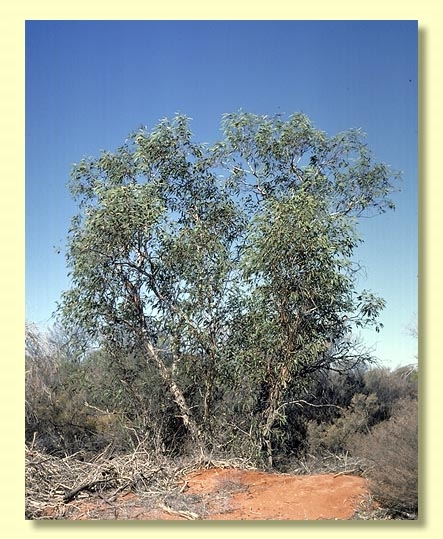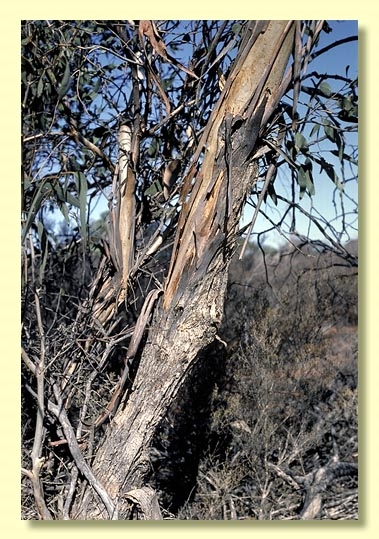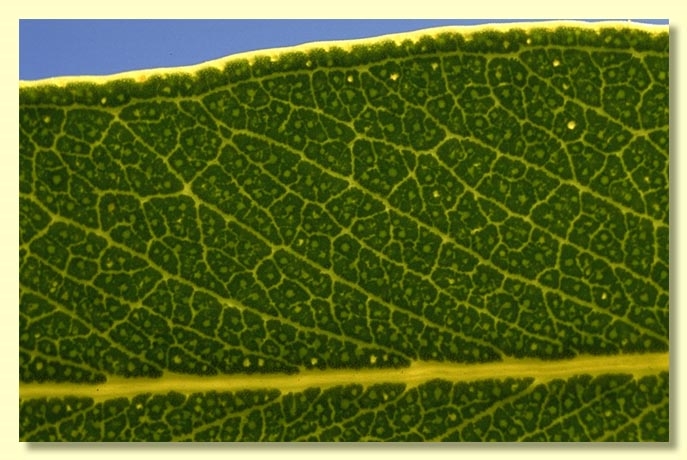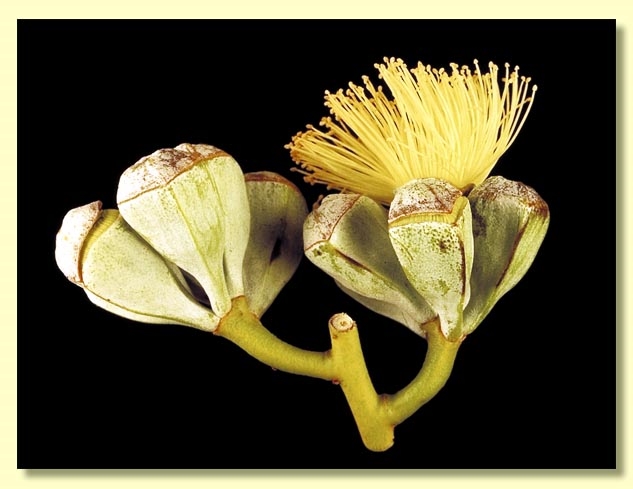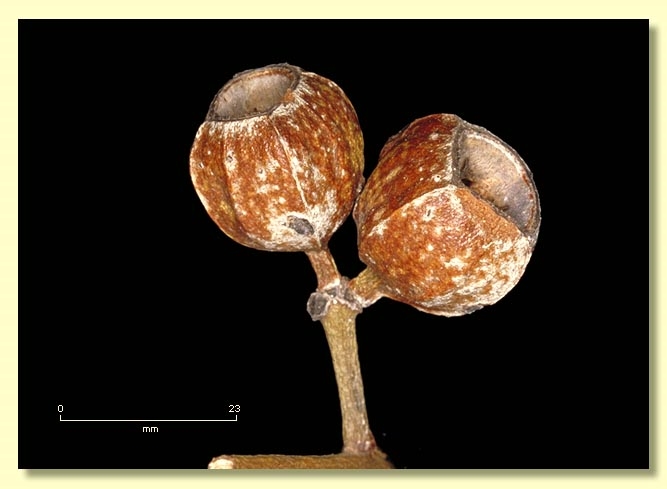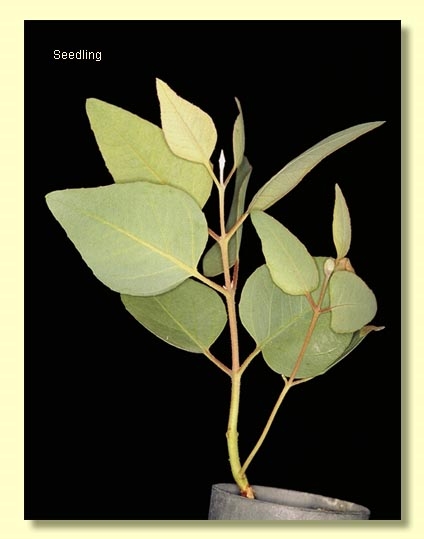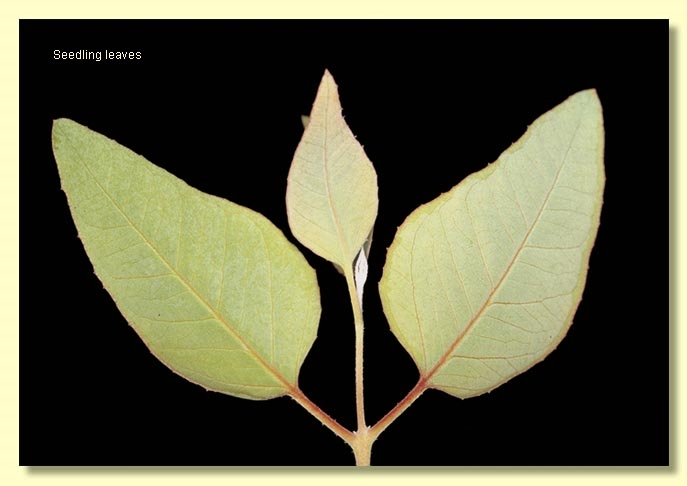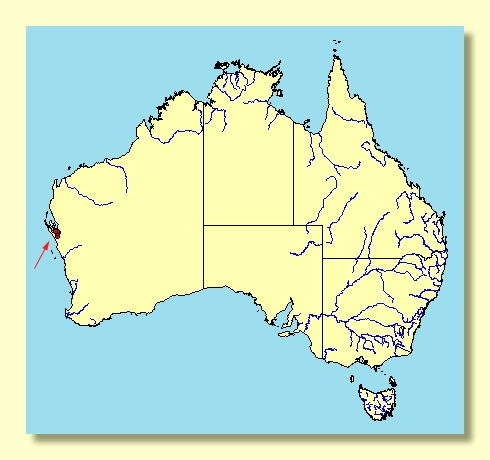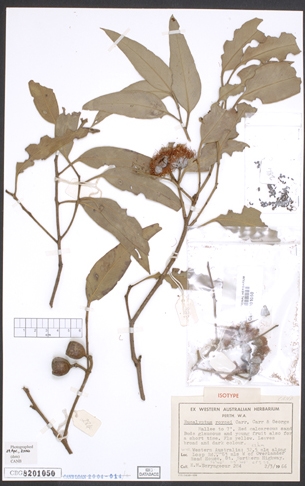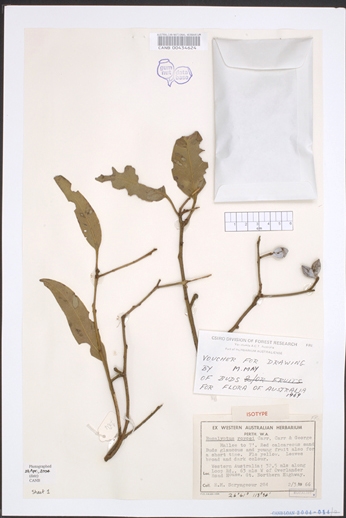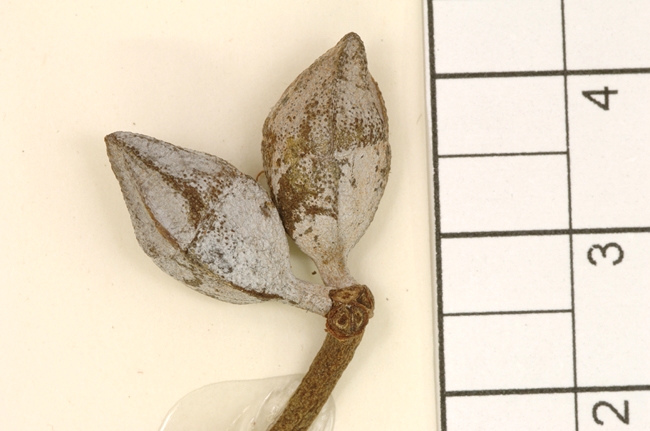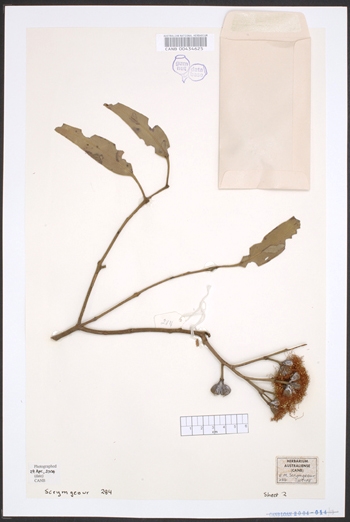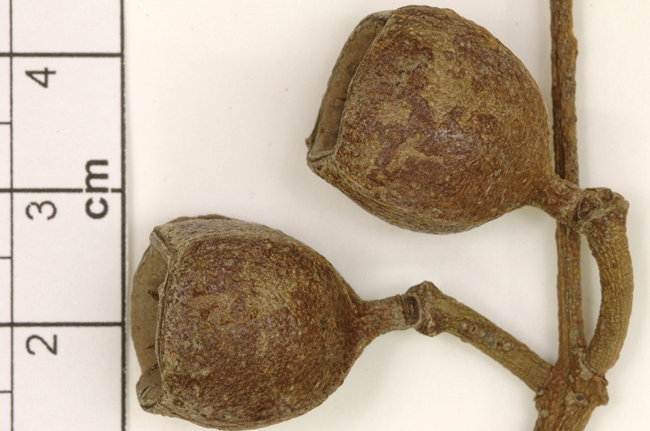Euclid - Online edition
Eucalyptus roycei
Eucalyptus | Eudesmia | Limbatae | Heteropterae | Tetraedrae
T: Western Australia: near Hamelin Pool, 32.5 miles [52.3 km] along Loop Road, 64 miles [103 km] W of Overlander Road House, Great Northern Highway, 2 Mar. 1966, E.M.Scrymgeour 284 & S.G.M.Carr; holo: PERTH; iso: BRI, CANB, MEL, NSW.
Bark rough on the lower trunk, grey to grey-brown, fibrous, flaky; smooth bark above grey to grey-green to creamy green to brownish cream.
Branchlets usually glaucous but glaucescence diminishing with age; oil glands present in the pith.
Juvenile growth (coppice or field seedlings to 50 cm): stems square to round in cross-section, with stellate hairs on the lower stem (of new re-growth); juvenile leaves alternate and petiolate, ovate to lanceolate, 6–12.5 cm long, 3–6 vm wide, apex acute, sometimes with hairs on the margins and midribs of lower leaves.
Adult leaves alternate, petioles 1–3 cm long; blade lanceolate to falcate, 6.5–14(15) cm long, (1.4)1.8–3(3.5) cm wide, base tapering to petiole, concolorous, dull grey-green to green, side-veins usually at an acute angle to midrib, occasionally wider, tertiary venation sparse to moderate, intramarginal vein present, oil glands mostly island.
Inflorescence axillary single or axillary compound, peduncles 0.9–2.8 cm long, buds 7 or 9 per umbel, pedicels 0.2–0.6 cm long. Mature buds cylindrical to obovoid, 1.4–2.1 cm long, 0.8–1.1 cm wide, hypanthium four-angled and usually glaucous, outer perianth whorl minutely sepaline, inner whorl operculate, operculum conical to rounded, stamens irregularly flexed, not grouped in four clusters, anthers oblong, versatile, dorsifixed, dehiscing by longitudinal slits (non-confluent), style long (in bud often bent under the operculum), stigma tapered, locules usually 3 or 4, the ovules arranged in 4 distinct vertical rows on the placentae. Flowers white or cream or pale yellow.
Fruit pedicellate, pedicels 0.2–0.8 cm long, cylindrical to barrell-shape, quadrangular, 1.5–3 cm long, 1.5–3 cm wide, disc vertically descending, valves 3 or 4 enclosed.
Seeds dull brown to black, obliquely pyramidal with a small translucent flange around the edge, sides ribbed, 2–3.5 mm long, surface smooth, hilum terminal.
Cultivated seedlings (measured at node 10): cotyledons reniform; stems square to round in cross-section, not glaucous, hairy, leaves petiolate, opposite for ca 7 nodes then becoming alternate, ovate to lanceolate, 7–8.5 cm long, 3–5 cm wide, green, apex acute, base rounded to truncate to tapering, lamina glabrous except for a few hairs on the petiole, midrib and leaf margin.
Flowering has been recorded in January, February and March.
It is cultivated in Kings Park & Botanic Garden, Perth and could be an attractive ornamental small tree with its large yellow flowers.
A mallee or small tree endemic to Western Australia, restricted to sandy country west of Wannoo and south of Shark Bay. The bark is rough and flaky at the base and the adult leaves dull, light green to grey-green.
It is easily recognised in its natural area of occurrence by the large 'square' fruit and conspicuous yellow flowers.
Eucalyptus roycei belongs in Eucalyptus subgenus Eudesmia because of the combination of cotyledons reniform in shape and folded and clasping in embryo, buds with the calyx free and evident as four small teeth around the midline of the bud. (Sections Ebbanoenses and Reticulatae in this subgenus have the calyx fused to the corolla and evident as four small teeth at the apex of the bud.) Within subgenus Eudesmia, E. roycei belongs in the section Limbatae, series Heteropterae, subseries Tetraedrae, that is further characterised by having seedling leaves with stellate hairs, the presence of oil glands in the pith of the branchlets, flanged more or less pyramidal seeds and buds and fruit square in cross-section. The other species in subseries Tetraedrae are E. conveniens, E. pleurocarpa, E. extrica, E. eudesmioides, E. erythrocorys and E. gittinsii. All these species can be easily distinguished by having buds in each leaf axil in groups of three (buds in groups of seven in E. roycei).

